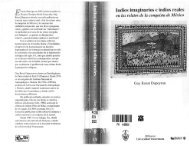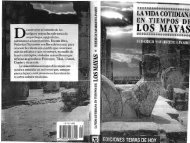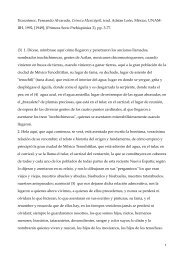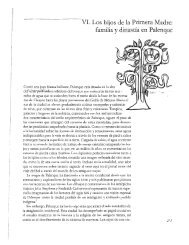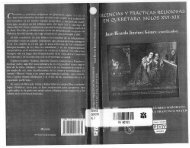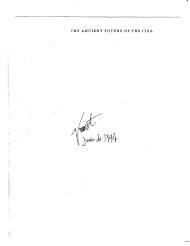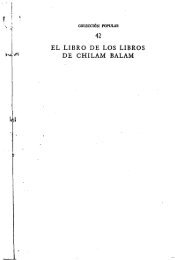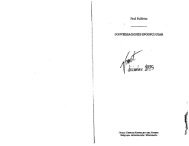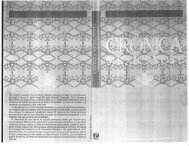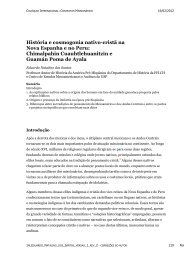HEAVEN BORN MERIDA AND ITS DESTINY - Histomesoamericana
HEAVEN BORN MERIDA AND ITS DESTINY - Histomesoamericana
HEAVEN BORN MERIDA AND ITS DESTINY - Histomesoamericana
Create successful ePaper yourself
Turn your PDF publications into a flip-book with our unique Google optimized e-Paper software.
30 INTRODUCTION<br />
that is what they are.<br />
All these materials are profoundly interwoven with the mystique and<br />
ritual of the calendar. They are dated by katuns and are preoccupied with<br />
katun ritual, referring frequently to the various acts of the katun ceremonial<br />
drama as outlined above. All the katun histories, for example,<br />
mention seating (act 9) and the word of the katun (act 15), and most of<br />
them give at least a précis of the sermon (act 20). All the earlier katun<br />
histories refer to at least four and as many as eight of the thirteen acts of<br />
the ceremonial of the katun. This structure disappears rapidly after 1677.<br />
None of the histories appears to refer to the first seven acts of the baktun<br />
ceremonial. In almost all cases, allusions to the ritual follow the order of<br />
the acts in the original may ceremonial of 11 Ahau in 1539.<br />
The katun histories may be precisely characterized, then, as ritual history.<br />
They are considerably constrained by the expectation that they will<br />
convert the real history of each twenty-year period into the language and<br />
ritual order of the katun ceremonial. And that they do—often with remarkable<br />
economy and elegance. By the same token, this is intentionally<br />
esoteric history, and, while the Mayan sun priests had an intensive education<br />
in it, we latter-day scribes are forced to educate ourselves, inevitably<br />
somewhat imperfectly. Like our Mayan forebears, we worry a lot about<br />
philosophy, specifically about the cosmology and theology that shaped,<br />
and were shaped by, the mystique of the katun, the may, and the baktun.<br />
Myth. Mayan cosmology formally begins with a characteristic ending:<br />
13.0.0.0.0 4 Ahau 8 Cumku (August 15, 3115 B.C.). The morning after<br />
that date was the beginning of the pseudohistorical Mayan calendar. It<br />
was also zero. Nothing existed—not even God, according to some accounts.<br />
There is reason to suppose that this date was the end of the third<br />
or possibly even the fourth baktun cycle of 5,200 tuns, implying an even<br />
earlier starting date around 20,000 B.C., but even that was merely a moment<br />
in a cycle that is bound to repeat itself. The first beginning of everything<br />
was time itself.<br />
This mystery is beautifully expressed in the creation myth "The Birth<br />
of the Uinal," which constitutes chapter 20 of the Chumayel. This delicate<br />
allegory likens the birth of time to the origin of man, a man traveling<br />
like the heavenly bodies on the road of days, time, sun, and fate<br />
[kin), carrying his burden of sin and shame to its inevitable and selfregenerative<br />
end.<br />
Did man come before woman? No, it was four female relatives of his<br />
who discovered time. So much for the rib of Adam. This may be an exquisite<br />
recognition that women counted time more precisely by the moon<br />
(u), as most American Indians did, for a long time before it could be paced<br />
(oc) by the sun priest. And for very good reasons: women were naturally<br />
more concerned with the approximately lunar cycle of menstruation and<br />
with the period of gestation, which seems to have given rise to the (again<br />
approximate) cycle of the 260-day tzol kin. What the women discovered in<br />
the footprints of Time was sex: the footprint of lah caoc'll Oc, twelve<br />
foot, or all of two feet'. After that, men and women traveled together. No



